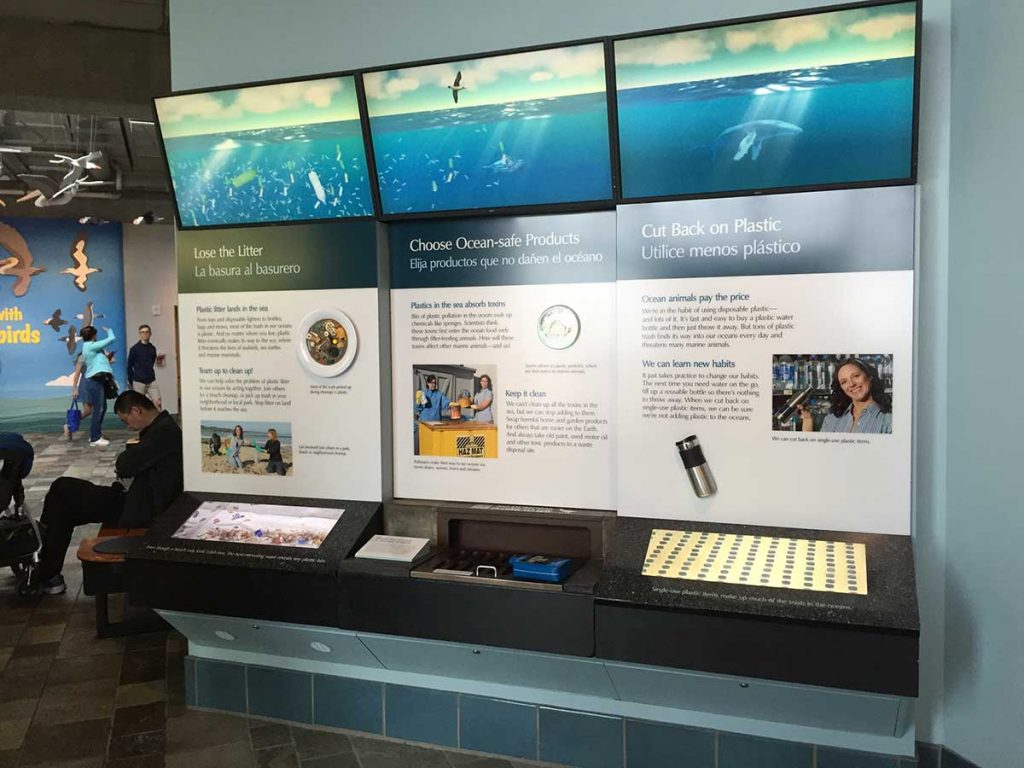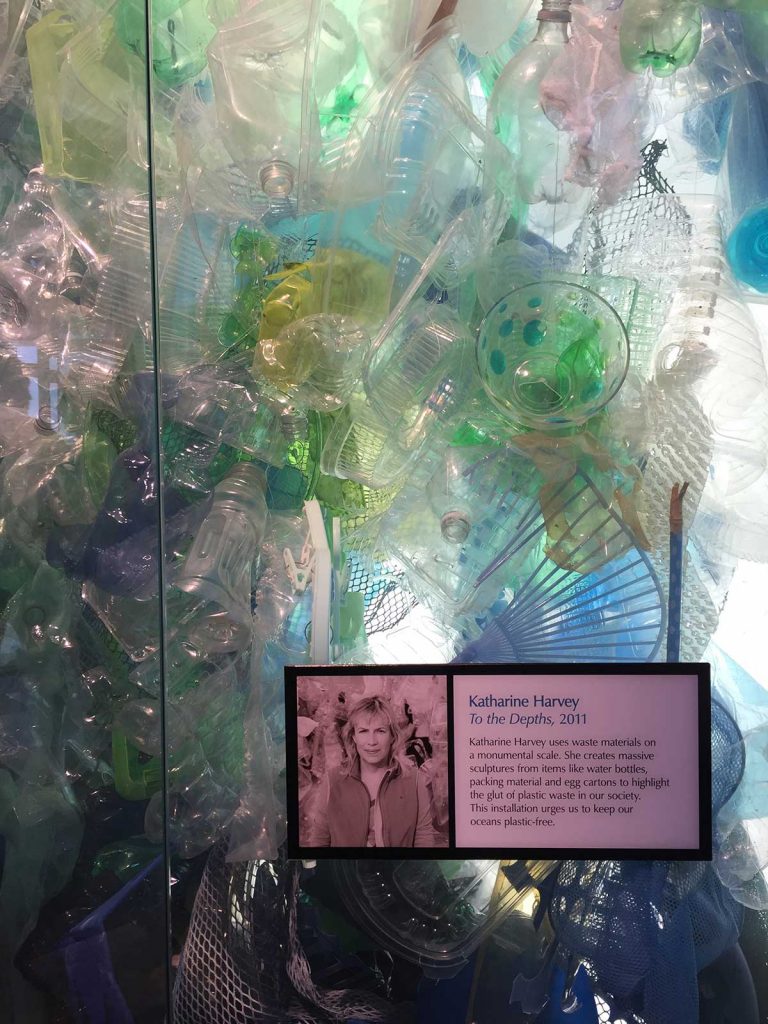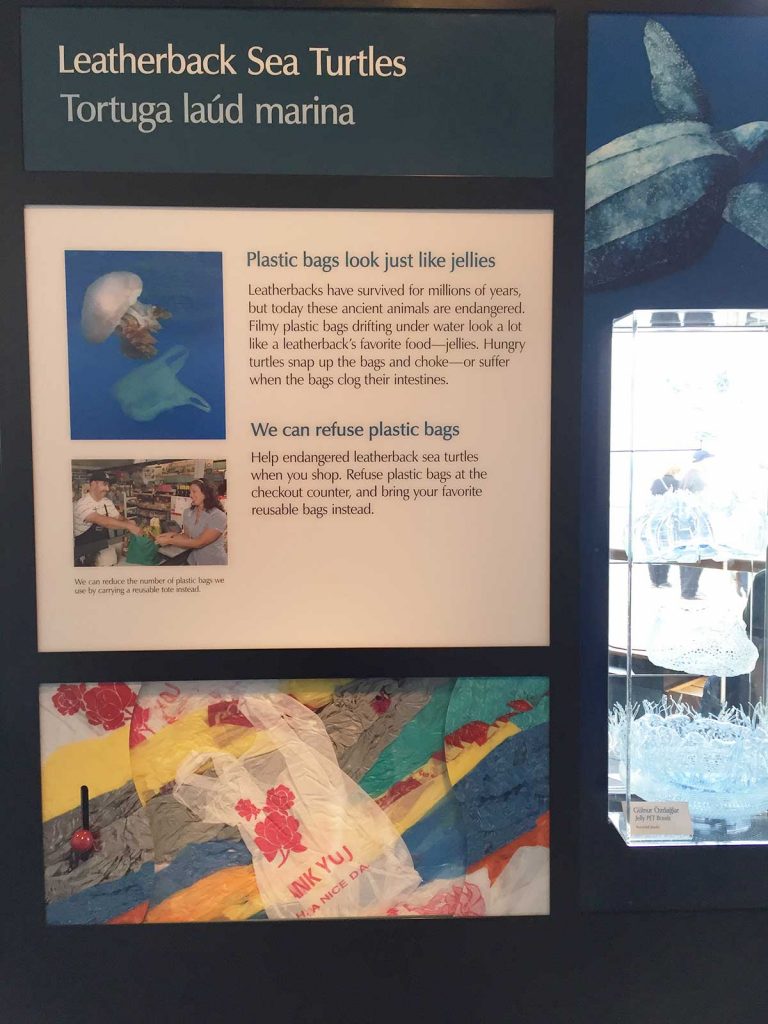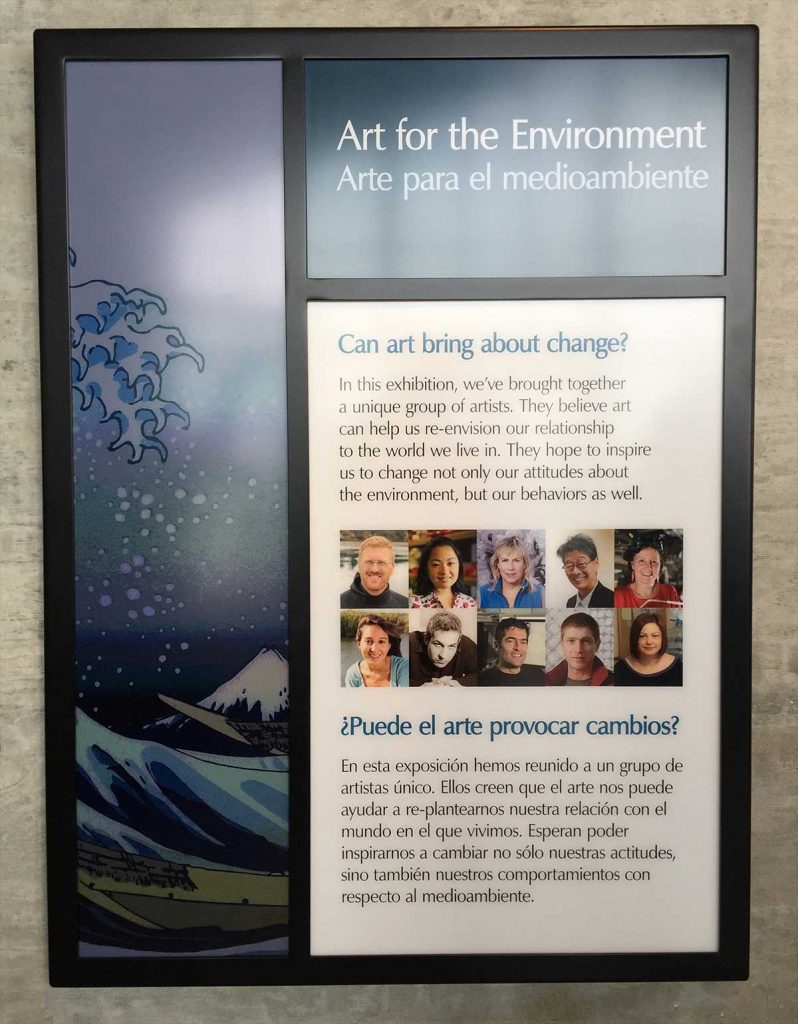In the exhibition, “Art for the Environment” at the Monterey Bay Aquarium, the hope is that by bringing together a unique group of artists, “art can help us re-envision our relationship to the world we live in.” The artists hope to inspire the viewer to “change not only our attitudes about the environment, but our behaviors as well.”

The exhibit focuses on litter, especially plastic litter, its effects on the ocean environment and how we each can make a real difference. Here a just a few examples from the exhibition of what we can do:
Lose the Litter
Plastic litter causes harm in our oceans. “From toys and disposable lighters to bottles, bags and straws, most of the trash in our oceans is plastic. And no matter where you live, plastic litter eventually makes its way to the sea, where it threatens the lives of seabirds, sea turtles and marine mammals.”

What can we do? If you live by a beach, organize or participate in a beach cleanup. Even if you’re just visiting a beach, clean up any litter you find. If you don’t live near an ocean, pick up trash at your schools, parks and neighborhoods.
Choose Ocean-safe Products
Plastics absorb toxic chemicals in the ocean. “Bits of plastic pollution in the ocean soak up chemicals like sponges. Scientists think these toxins first enter the ocean food web through filter-feeding animals.”
What can we do? Avoid using harmful chemicals on your gardens and in your homes. These toxins make their way into our waterways. Make sure to bring used motor oil, old paint and other hazardous waste to your local waste disposal site. Check https://recyclenation.com/find/ to find your nearest Household Hazardous Waste (HHW) facility.
Cut Back on Plastic

Our plastic habit is causing problems for our oceans. “We’re in the habit of using disposable plastic – and lots of it. It’s fast and easy to buy a plastic water bottle and then just throw it away. But tons of plastic trash finds its way into our oceans every day and threatens many marine animals.”
What can we do? Break the disposable plastic habit but thinking reusable products instead of single-use disposable ones.
The exhibit also shows through photos and art made of plastic, the specific struggles of marine life with the litter they encounter. For example, plastic bags look to the leatherback sea turtle just like their favorite food – jellies. The plastic bags cause the turtles to choke or harm them by clogging up their intestines.
